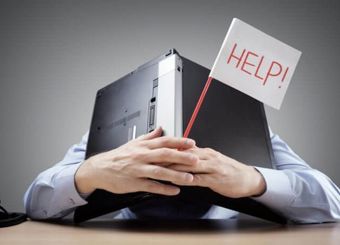3 Reasons Antiquated Invoices Create a Convoluted Payment Process
Most finance professionals will agree with the statement: efficient and low-cost processes are the ideal to strive towards.
Achieving this is one of the many things in life that is easier said than done. But everything begins with one step forward. Here, the first step is identifying the chief contributors. In finance departments, this is almost always one thing — paper.
Antiquated paper invoicing makes the payment process for businesses more difficult than it has to be. It bogs down the process with tedious tasks that are a waste of valuable time. Thankfully, it’s easy to solve that with eInvoicing and automation.

Lack of Automated Invoicing Leads to Inefficiencies
What does your invoice processing workflow look like? Is it full of manual tasks such as sorting, categorizing, and entering invoice data into your accounting system?
Your experience isn’t unique. In the U.S. paper invoices account for 75% of all invoices processed by finance departments. Invoices are an enormous part of what makes a finance department's day-to-day process difficult — because of this, when you switch to invoice automation there is an almost immediate improvement as the process becomes more efficient.
Considering this, it’s not surprising that, per Deloitte, 41% of business leaders are currently using workforce automation technology because they know it makes them more efficient. That same concept can, and should, apply to invoice processing.
In fact, according to Business Insider, enterprises using digital payable platform solutions can see 81% lower processing costs and 73% faster processing cycle times.
Paying efficiently and on-time is of benefit to both Accounts Payable (AP) and Accounts Receivable (AR) teams. If you ask Esker, they’ll report that eInvoicing allows you to bring in revenue faster, make more accurate forecasts, enhance your control over the payment process, and increase visibility.
Paper Invoicing Comes with Costs
Imagine you’ve been tasked with finding out what’s behind unexpected drains on your department’s budget.
You have an accounting system full of transaction records, but most of them were entered manually and the hard copies lost in the shuffle thereafter. No one’s sure they’re all correct.
No one’s sure if all the outstanding invoices were processed and fulfilled. After all, human error happens all the time, and it’s easy for an invoice to get misplaced and forgotten about.
You go through the unexpected charges line by line, hoping to find your answers that way. After hours of reading and several cups of coffee, you discover a series of late fees and shipping costs related to AP invoice processing.
You check and double-check your findings and there’s no doubt. Paper invoices leave too much room for mistakes and vulnerabilities that cost your department time and money to fix.
The solution? Invoice Automation.
The scenario above provides a look at how paper invoices can negatively affect finance departments. These costs can be calculated in money spent and work hours wasted.

Let’s break down time wasted first. Paper invoices are inherently manual — even when done correctly the first time. It only gets worse as mistakes are made and time has to be spent finding and fixing errors. And then there are your vendors.
Paper invoicing isn’t just manual, it’s hard to track and lacks transparency not just for your company but for your vendors. Investing in automated invoicing makes the entire process more visible. This will save you from wasting time fielding phone calls about status updates.
On the other hand, unexpected costs tend to pile up due to two main things: mistakes and externalities.
Mistakes, as mentioned before, cost time but they can also cost money when they’re bad enough to incur late fees. As for externalities, a recent example would be 2020s Black Swan event. The economic shutdown that followed led many companies to outsource invoice scanning and handling as part of their business continuity plans. And shipping doesn’t come cheap.
According to Forbes, the average American business spends upwards of $12,000 per employees per year for office space. This just includes the cost of standard office space, it doesn’t include the costs that come with paper burdened processes (extra office space, cabinets, folders, furniture, supplies, etc.)
Accounts Payable Departments Suffer without Transparency
The lack of transparency that comes hand in hand with paper invoices has other downsides as well. Vendors suffer from it and so does your own Accounts Payable department.
Preparing for your end-of-the-year audits and tax season with paper-based processes invariably results in headaches and overtime. Between gathering paper records, verifying vendors, and compliance, finding every single invoice within the business can be time-consuming and tedious.
This is often compounded by last-minute unexpected invoices that make tax prep processes and accurate spend reporting tedious and confusing.
The inability to monitor invoices will also make it harder to spot fraud. This is a vulnerability that is risky to have, particularly now. According to businesses surveyed in early 2020, fraud attacks are becoming more common.
20% of the businesses reported a significant increase and 56% report a general increase. Only 2% reported a decrease.
CFOs also report that fraud is at an all-time high as over 78% of them were affected by it in 2019.
Invoice automation not only makes it easy to track every step of the process — it’s inherently more secure.

Conclusion
Antiquated processes fall out of trend for a reason. Paper invoices are no different. They bog down finance departments with tedious tasks, increase the risk of fraud, prevent transparency, and leave you open to additional shipping costs and late fees.
Say goodbye to these problems and take your finance department to the next level with automated AP invoice processing! Reach out to learn more.






